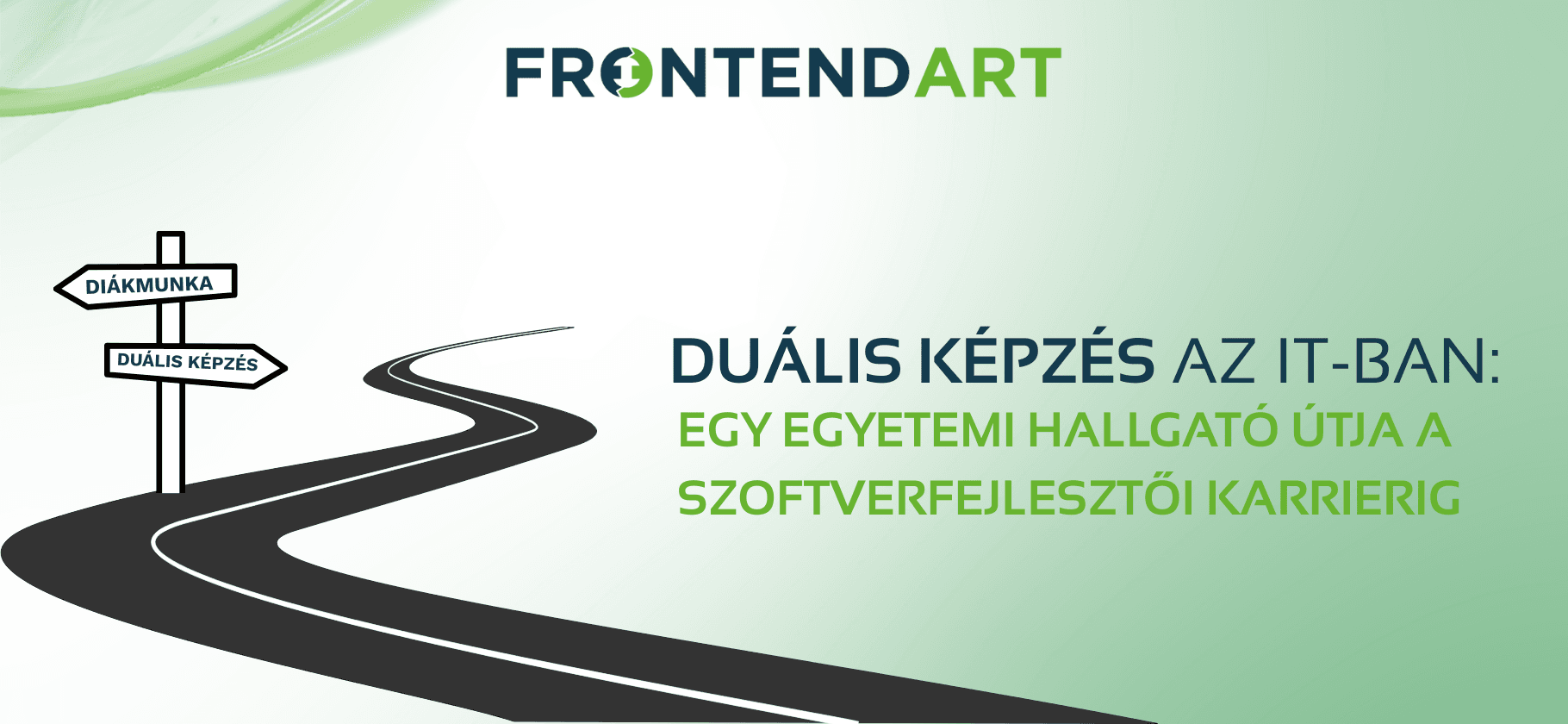
In today's IT job market, theoretical knowledge and a degree are no longer enough. Employers increasingly value real-world experience – the ability to understand how the industry operates even during one's studies. That's why dual education is becoming increasingly popular, offering university students the opportunity to gain professional experience alongside their studies, for example in software development or testing.
Marcell Székesi, a medior developer at FrontEndART Software Ltd., has been a dual education student at the company since his first semester. We spoke with him about his daily life in the dual program, the advantages it brought him, and why he recommends this form of education to others.
How is dual education different from traditional university formats?
"The curriculum is the same as in full-time programs, but in practice, I immediately saw how custom software development works – this was a huge help in my studies,” says Marcell. “From the first semester, I got to work on real projects, so the hands-on experience not only complemented but also made theoretical learning easier."
During the academic term, dual students attend theoretical classes like their full-time peers, but they also spend some of their free time at a partner company, participating in a paid internship.
Is it possible to balance work and study?
"Absolutely! Thanks to flexible working hours, I was easily able to fit work into my university schedule. I generally worked about 20 hours a week on weekdays, which wasn’t overwhelming,” says Marcell, adding, “At FrontEndART, they understood I was a student, so I learned the work processes in a supportive environment and was gradually given increasingly complex tasks."
He also had time to enjoy campus life. “In fact, work often helped bring structure to my week. I was also glad I didn’t have to support myself with odd jobs, but could already work in the profession I truly love.”
A real competitive edge when launching your career
According to Marcell, the experience gained over three years is invaluable on its own: “It was one of the best decisions I made during my university years. After getting my degree, I’m no longer applying for jobs as a complete entry-level candidate – I already have experience working on real projects.” Most dual education partner companies offer full-time roles at the end of the program, which makes entering the job market significantly easier.
International trends also confirm the importance of practical experience. According to a survey by the National Association of Colleges and Employers (NACE), more than half of employers (51%) expect recent graduates to have real work experience. However, only 15% of them offer structured internship opportunities. Dual education helps bridge this gap.
Who is dual education for?
Marcell recommends it to anyone who wants to lay the foundation of their professional future during university: “If someone already has some basic programming knowledge – even just as a hobby – at the time of application, I highly recommend it. Dual education provides both theoretical knowledge and practical experience, so you can start your career from a much stronger position.”
How can you join the program?
To enter dual education, you must first be accepted into one of SZTE’s IT bachelor programs (such as Software Engineering, Computer Engineering, or Business Informatics). Then, you need a student employment contract with a dual partner company – FrontEndART is one such partner. It’s not necessary to start practical work from the first semester, but more than half of the total duration of your studies must be completed in dual mode. Partner companies regularly advertise open positions on their websites, so it's worth following them. The program is available in both state-funded and self-funded formats, and in full-time and evening courses.
Which majors offer dual education at SZTE?
- Business Informatics BSc/MSc
- Software Engineering BSc/MSc
- Computer Engineering BSc/MSc
Academic knowledge and real professional experience
Dual education offers a real opportunity for students to get to know the IT profession beyond textbooks – gaining valuable, marketable experience already during their university years. Marcell Székesi’s example clearly shows that studying and working are not mutually exclusive – in fact, they can reinforce each other to better prepare students for future challenges. If you want to gain professional routine before graduation and ensure that your diploma holds real value in the job market, dual education could be the ideal choice for you.